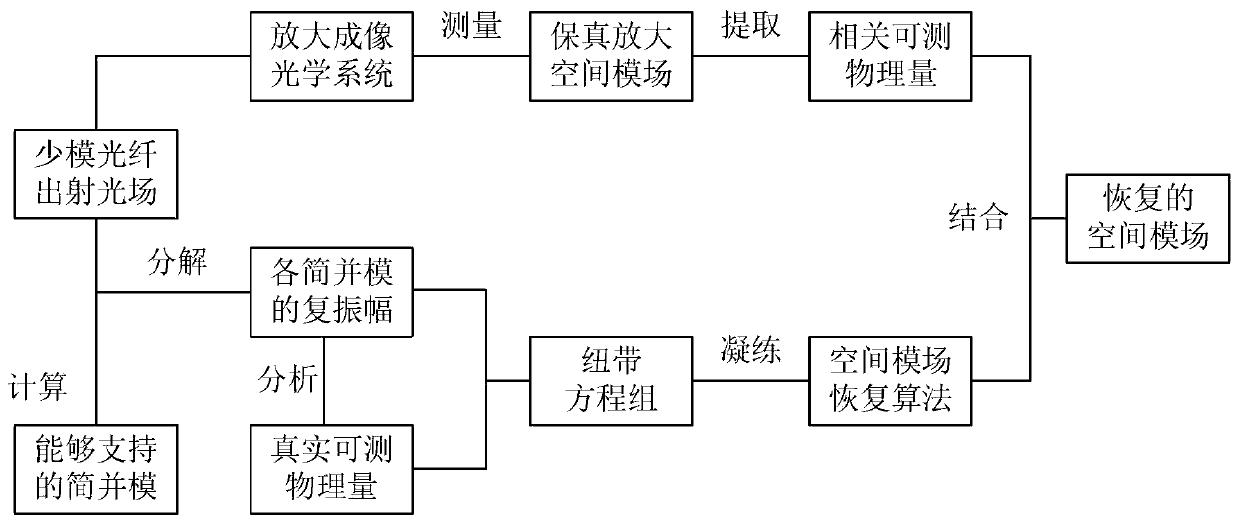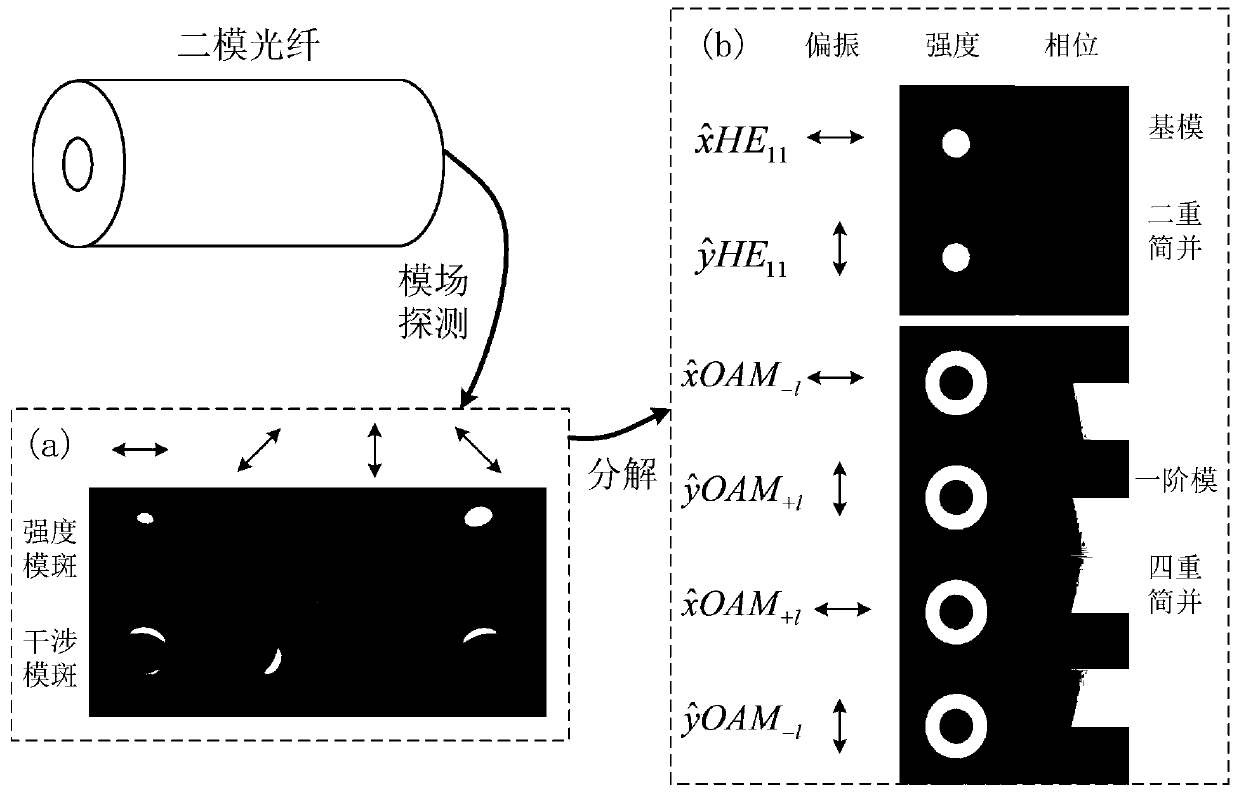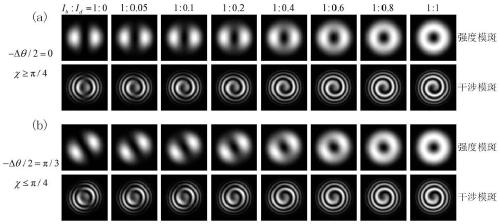Few-mode optical fiber space mode field detection method based on interference theory
A technology of few-mode optical fiber and detection method, which is applied in the field of space division multiplexing optical fiber communication system and integrated optics, can solve the problem of difficulty in accurately measuring few-mode optical fiber-degenerate spatial mode, etc., and achieves a low-cost, high-precision mode Simple effects of ingredients and experimental equipment
- Summary
- Abstract
- Description
- Claims
- Application Information
AI Technical Summary
Problems solved by technology
Method used
Image
Examples
Embodiment Construction
[0030] Hereinafter, the present invention will be further described by taking a two-mode optical fiber as an example in conjunction with the accompanying drawings. The accompanying drawings are only for illustration purposes, and do not limit the scope of application of the present invention.
[0031] A few-mode optical fiber spatial mode field detection method based on interference theory, the brief process can be found in figure 1 . We first introduce the lower half of the flowchart, the theoretical part. Based on the few-mode fiber with given geometric parameters (including the shape and size of the few-mode fiber) and optical characteristic parameters (including the refractive index distribution and other physical parameters that affect its optical properties), calculate the number of modes it can support, and get Mode field distributions and propagation constants of these spatial eigenmodes. For simple optical fibers that can obtain analytical solutions, use analytical ...
PUM
 Login to View More
Login to View More Abstract
Description
Claims
Application Information
 Login to View More
Login to View More - R&D
- Intellectual Property
- Life Sciences
- Materials
- Tech Scout
- Unparalleled Data Quality
- Higher Quality Content
- 60% Fewer Hallucinations
Browse by: Latest US Patents, China's latest patents, Technical Efficacy Thesaurus, Application Domain, Technology Topic, Popular Technical Reports.
© 2025 PatSnap. All rights reserved.Legal|Privacy policy|Modern Slavery Act Transparency Statement|Sitemap|About US| Contact US: help@patsnap.com



